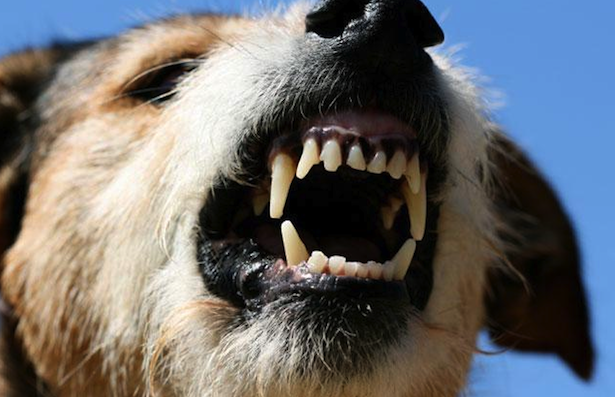“The Belly-Button Routine” got its name from the fact that Roger Abrantes keeps his right hand holding the lead right in front of his belly-button. The only movement he makes with it it’s down and up, respectively when he stops and when he resumes walking after a stop. Be aware of where your right hand holding the lead is. We don’t want you or the dog to jerk it.
Notice how Professor Abranteswalks slowly forward and back, keeping a steady rhythm and changing direction very clearly, giving the dog a fair opportunity to follow him. Sometimes, he stops, and the dog must stop as well. Depending on what he ask it to do, it may sit, stand or down.
He calls this drill the kata* of dog training. Once you can do that to perfection, varying the form of the signals between hand, sound, body, and facial, you can teach your dog all you want, and a dog can learn.
Pay particular attention to:
1 – The few signals Abrantes uses.
2 – No repetitions of signals and no yelling.
3 – The consistency in the form of the signals. They are the same, every time, independently of whether he uses a sound, a hand or a body signal.
4 – The consistent and regular use of the semi-conditioned positive sound reinforcer: He says ‘dygtig.’** In SMAF: “!±sound”(dygtig). (You may have to turn your sound up to hear some of them because he whispers them).
5 – The immediate use of the inhibitor ‘ah’ when the dog shows an undesired behavior. In SMAF: [!-sound](ah).
6 – The eye contact he maintains with the dog when he asks it to do something.
7 – The few treats he uses (compared to the majority of trainers). He uses them strategically to reinforce some behaviors on specific circumstances.
8 – The contact he establishes with the dog during the performance of the drill.
To learn more about creating an effective communication and a sound relationship with your, please see our course Ethology and Behaviorism.
_________________
* Kata (型 or 形 literally: ‘form’) is Japanese and designates the detailed choreographed patterns of movements practiced either solo or in pairs. Many traditional Japanese arts use kata, such as theatre forms like kabuki, and schools of tea ceremony (chadō), but are most commonly known for their use in the martial arts.
** “Dygtig” [ˈdøgdi] is a Danish word and means “clever.” It is, apparently, a good sound as a reinforcer, Abrantes discovered many years ago. ![]()
Quiz (for students wishing to earn study credits)
“The Abrantes Belly-Button Routine” Video Quiz
You have five minutes to complete this quiz.







